
Hindus, the followers of Hinduism, get tattoos on their bodies that are related to their faith to represent their unwavering and pure belief. These Hindu tattoos are not just body decorations – they are a way to pay respect to revered deities, ancient traditions, beliefs, philosophies, and mythological stories. Some people prefer to have spiritual elements tattooed, while others like to get symbols of deities tattooed. Check out this article to learn about some popular Hindu tattoo design ideas and their meanings. Keep scrolling!
8 Simple Hindu Tattoo Designs
Whether you want a Hindu tattoo or are in love with its rich traditions, here you will find a diverse collection of this ancient art form:
1. Hindu tattoo for men
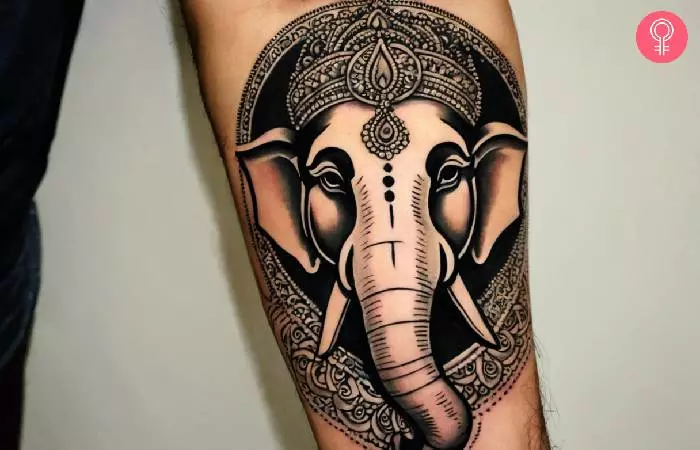 Image: Stable Diffusion/StyleCraze Design Team
Image: Stable Diffusion/StyleCraze Design Team
Lord Ganesha is one of the most revered gods of Hindu culture. His tattoo is perfect for those who prefer intricate tattoos. The dedication to ornate details and precise shading will take longer than usual to complete the tattoo, but the results will be very satisfying. You can also use colors for a more vibrant look. Ganesh tattoos are a meaningful option to reflect your reverence.
2. Hindu tattoo for women
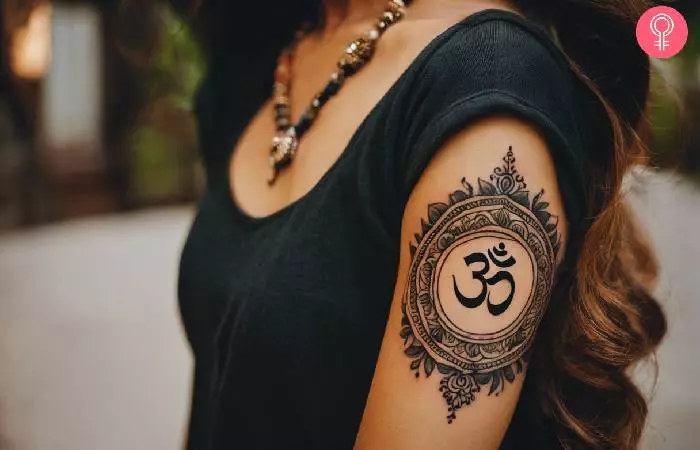 Image: Stable Diffusion/StyleCraze Design Team
Image: Stable Diffusion/StyleCraze Design Team
The Sanskrit word ‘Om’ is a symbol of spirituality not only among Hindus but all over the world. It is enchanted during meditation to channelize the positive energy in an individual. It is a common tattoo subject among Hindus and people who believe in spirituality.
3. Traditional Hindu tattoo
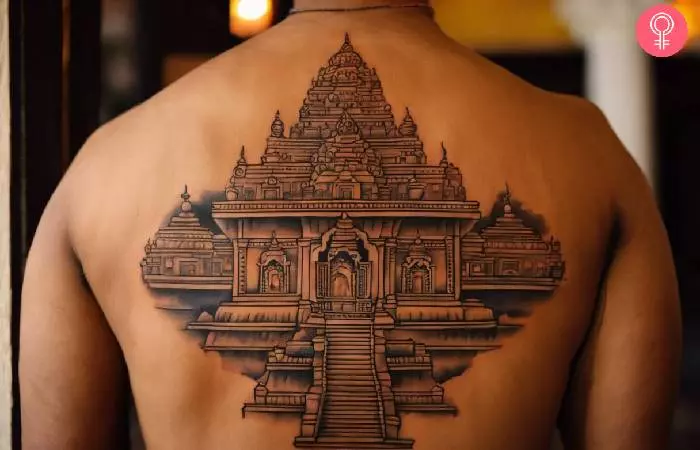 Image: Stable Diffusion/StyleCraze Design Team
Image: Stable Diffusion/StyleCraze Design Team
The temple tattoo shows your dedication to the exploration of spiritual truth and knowledge. These structures can be tattooed on their own or combined with other symbols that have Hindu meaning. The black work gives a striking look to the design and with the placement on the back it shows that the wearer carries the spiritual knowledge with him wherever he goes. All temple tattoo designs help honor your beliefs.
4. Ancient Hindu Tattoo
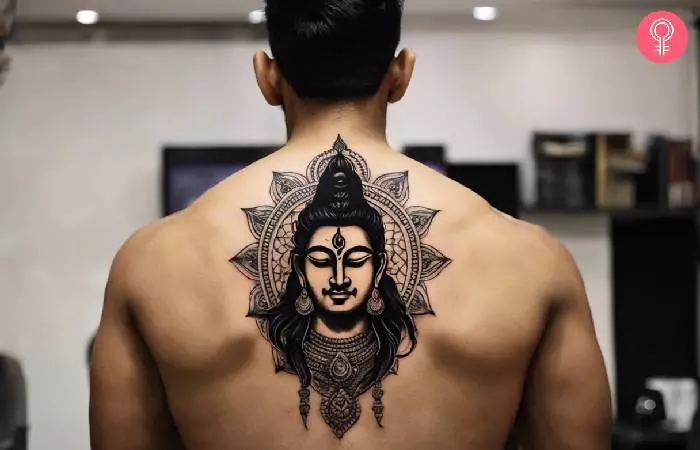 Image: Stable Diffusion/StyleCraze Design Team
Image: Stable Diffusion/StyleCraze Design Team
Meditation is an important part of ancient Hindu culture. Mahadev, or Lord Shiva, is often seen in the meditating state. The tattoo of Mahadev with closed eyes refers to him meditating peacefully and is common among people who value inner peace and spirituality.
5. Forearm Hindu Tattoo
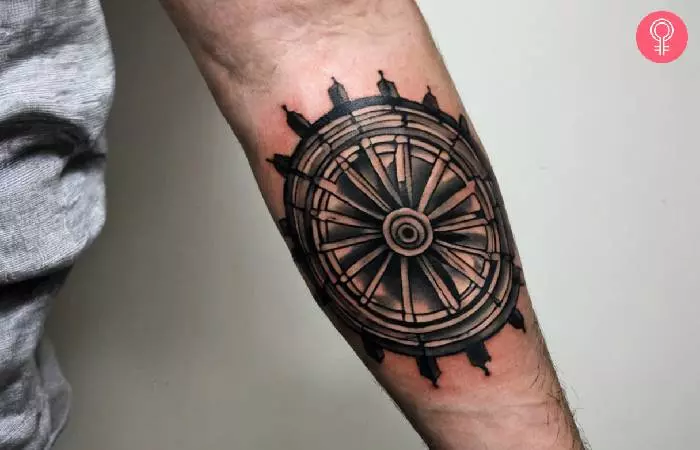 Image: Stable Diffusion/StyleCraze Design Team
Image: Stable Diffusion/StyleCraze Design Team
In Hindu culture, a chakra has different meanings. Lord Vishnu is seen with a whirling Sudarshana Chakra on his fingers. It is derived from the Sanskrit word ‘cakra’ which means ‘wheel’ or ‘circle of life’. It represents the seven energy centres in a human body, each with its own meaning.
6. Hindu tattoo on hand
 Image: Dall·E/StyleCraze Design Team
Image: Dall·E/StyleCraze Design Team
The feather of the national bird of India has a significant meaning in Hindu culture. It is often depicted with a peacock feather on its crown to represent its beauty, royalty and power. The peacock is also associated with the goddesses Saraswati and Lakshmi, making it a symbol of benevolence, knowledge, wealth and prosperity.
7. Small Hindu Tattoo
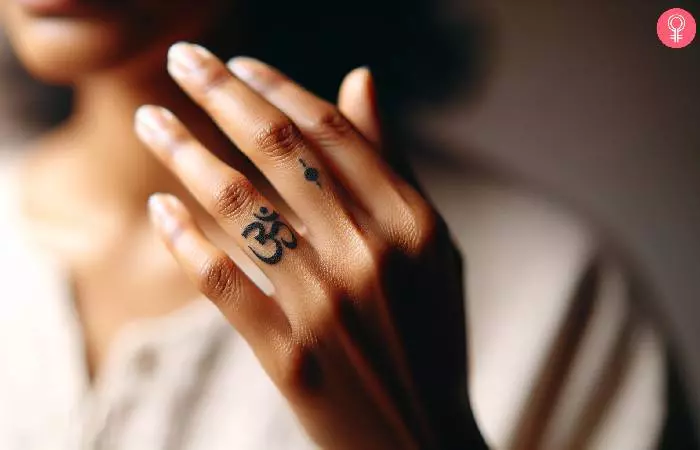 Image: Dall·E/StyleCraze Design Team
Image: Dall·E/StyleCraze Design Team
Not all tattoo enthusiasts are into tattoos with intricate details or intense shading to impress the viewers. Some prefer minimalist tattoos that subtly show their devotion. This illustration of Om on one finger catches the eye.
8. Hindu tattoo sleeve
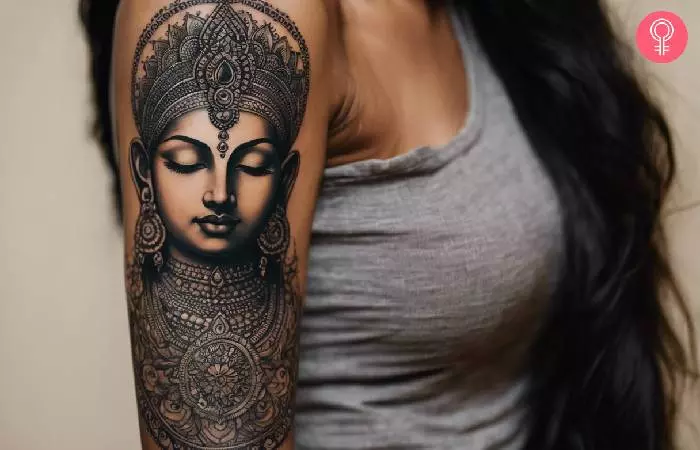 Image: Dall·E/StyleCraze Design Team
Image: Dall·E/StyleCraze Design Team
Hindu goddess tattoos are powerful and pious works of art. The large tattoo design of a Hindu goddess covers the quarter sleeve of the arm. There are several gods and goddesses in Hindu mythology, so it is a good choice to get a tattoo of the one you are most devoted to.
Hindu tattoos have a deep religious meaning for the devotees. They show the faith, devotion and trust that the individuals have in the Supreme Being. Some prefer the illustration of their revered deity, while others with a more abstract view of the world opt for the symbols of Hinduism. You can use colors for a pop of color or opt for black and white illustrations for a more realistic effect.
Was this article helpful?
Leave a Reply